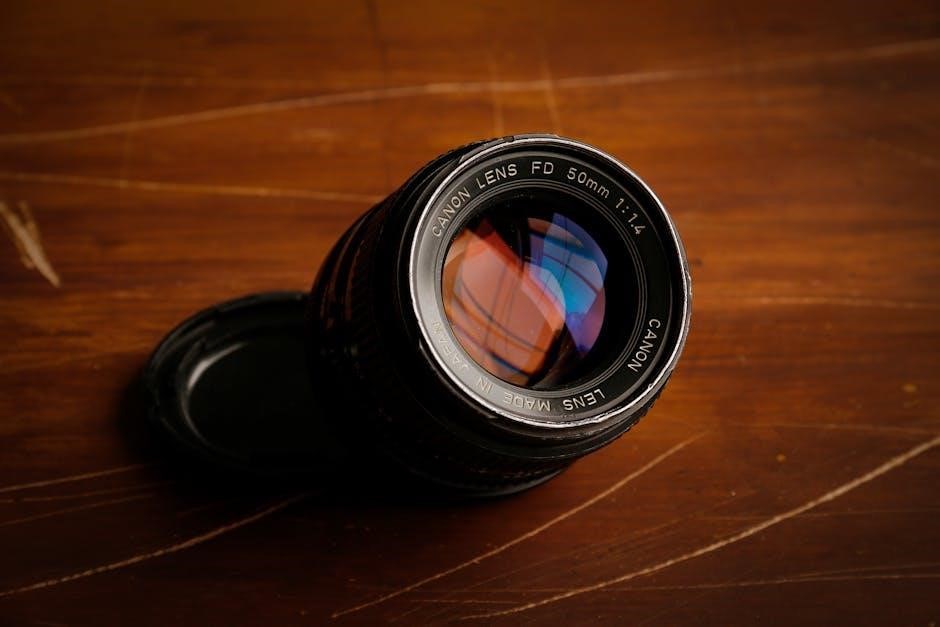Welcome to the Canon FL Lens Service Manual‚ your comprehensive guide for servicing and maintaining FL lenses. This manual provides detailed repair procedures‚ diagnostic tools‚ and maintenance tips to ensure optimal performance and longevity of your equipment‚ designed for professionals and enthusiasts alike. Proper servicing is crucial to preserve image quality and functionality‚ making this resource indispensable for technicians and photographers. Use this manual to troubleshoot common issues‚ perform precise repairs‚ and keep your FL lenses in peak condition. Always follow safety precautions and use recommended tools for best results. This guide covers everything from basic maintenance to advanced repair techniques‚ ensuring your Canon FL lenses continue to deliver exceptional results. By adhering to the procedures outlined‚ you’ll maintain the high standards of Canon’s legacy lenses‚ ensuring they remain reliable and perform flawlessly for years to come. Regular servicing and proper care are essential to uphold the optical excellence and mechanical precision of FL lenses‚ making this manual a vital resource for anyone working with these classic optics. Whether you’re a seasoned professional or an avid hobbyist‚ this manual offers the insights and instructions needed to service your FL lenses with confidence and precision. Trust this guide to help you overcome technical challenges and restore your lenses to their original functionality. With clear instructions and detailed diagrams‚ the Canon FL Lens Service Manual is your ultimate reference for all servicing needs. Keep your FL lenses in pristine condition and ensure they continue to capture stunning images with the help of this essential manual.
1.1 Purpose and Scope of the Manual
This section outlines the purpose and scope of the Canon FL Lens Service Manual‚ detailing its objectives and coverage. The manual is designed to provide clear‚ step-by-step instructions for servicing‚ repairing‚ and maintaining Canon FL lenses. It covers diagnostic procedures‚ repair techniques‚ and maintenance guidelines to ensure optimal lens performance. The manual is intended for professionals and enthusiasts‚ offering comprehensive guidance on resolving common issues and performing advanced repairs. It includes detailed diagrams‚ parts lists‚ and troubleshooting tips‚ ensuring users can address both minor and complex problems effectively. The scope encompasses all aspects of FL lens servicing‚ from basic cleaning to intricate mechanical adjustments‚ ensuring users can restore and maintain their lenses to factory standards.
1.2 Safety Precautions for Servicing Canon Lenses
Servicing Canon FL lenses requires strict adherence to safety guidelines to prevent damage or injury. Always work in a clean‚ well-lit environment and use appropriate tools to avoid scratching or breaking optical components. Handle lens elements with care‚ using soft cloths to prevent fingerprints or smudges. Ensure electrical components are disconnected before servicing to avoid shock or damage; Protect your eyes with safety glasses and wear gloves to prevent cuts from sharp edges. Use static-free equipment to prevent damage to sensitive electronics. Follow proper cleaning and lubrication procedures‚ and avoid using harsh chemicals that may harm lens coatings. If unsure‚ consult professional resources or seek assistance from certified technicians to ensure safe and effective servicing.
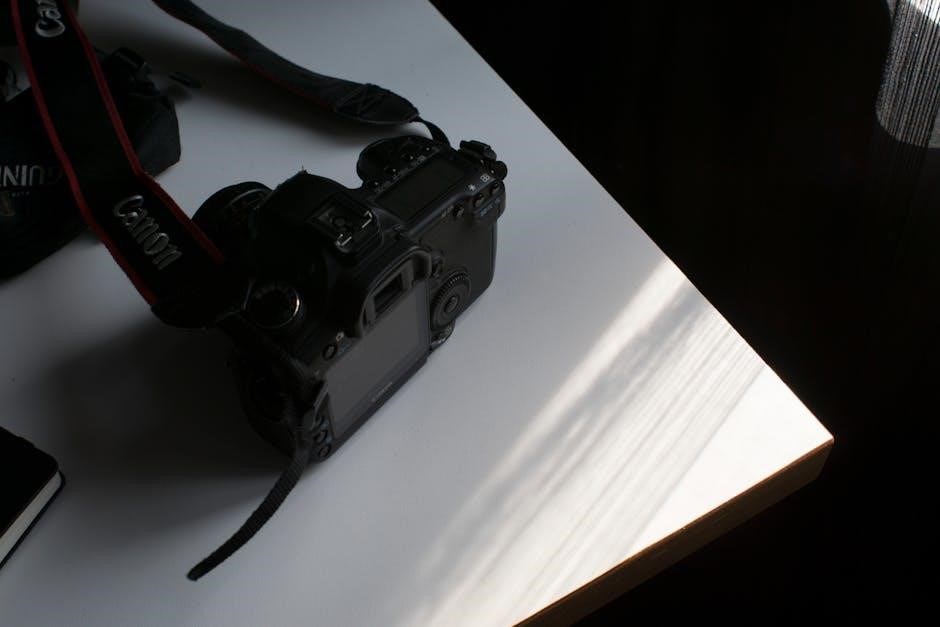
History and Development of Canon FL Lenses
The Canon FL lens series‚ introduced in the late 1950s‚ marked a significant evolution in Canon’s lens technology‚ bridging the gap between screw-mount and FD lenses‚ and paving the way for future innovations.
2.1 Overview of the Canon FL Lens Series
The Canon FL lens series represents a pivotal era in Canon’s optical evolution‚ serving as a bridge between the earlier screw-mount lenses and the later FD series. Introduced in the late 1950s‚ FL lenses were designed to offer improved functionality and compatibility with Canon’s evolving camera systems. They featured a new automatic aperture mechanism‚ enabling easier operation during shooting. The FL series included a range of focal lengths‚ from wide-angle to telephoto‚ catering to diverse photographic needs. These lenses were known for their robust construction‚ optical clarity‚ and mechanical precision‚ making them popular among professionals and enthusiasts. The FL series laid the groundwork for future innovations in Canon’s lens technology‚ ensuring a smooth transition to the FD mount system. Its legacy endures as a testament to Canon’s commitment to optical excellence and adaptability in a rapidly advancing field.
2.2 Key Features and Innovations in FL Lenses
The Canon FL lenses introduced several key innovations‚ including an automatic aperture mechanism‚ which simplified operation during shooting. They featured high-quality optical glass for improved image clarity and reduced distortions. The FL series also incorporated a more robust mechanical design‚ ensuring durability and precise focus control. These lenses were compatible with Canon’s evolving camera systems‚ offering versatility for photographers. The FL design emphasized compactness and lightweight construction‚ making them easier to handle in various shooting conditions. These advancements solidified the FL series as a significant step forward in Canon’s lens technology‚ blending optical excellence with user-friendly functionality for both professional and amateur photographers.

Understanding the Lens Mechanism
The Canon FL lens mechanism comprises optical‚ mechanical‚ and aperture/focusing components. These interconnected systems ensure precise image formation‚ light control‚ and focus accuracy‚ essential for optimal functionality and image quality.
3.1 Optical Design and Construction
The Canon FL lens series features a sophisticated optical design with multiple lens elements carefully arranged to minimize aberrations and ensure sharp‚ high-contrast images. These lenses utilize a combination of glass types‚ including anamorphic and high-refractive-index elements‚ to correct chromatic aberrations and enhance optical performance. The optical system is designed to maintain consistent image quality across the aperture range‚ making it suitable for both professional and enthusiast photography. The construction emphasizes precision alignment of lens elements‚ which is critical for maintaining focus accuracy and preventing light leaks or flare. The FL series’ optical design reflects Canon’s commitment to delivering exceptional imaging capabilities in a compact‚ durable form. Proper alignment of these components is essential for preserving the lens’s optical integrity and ensuring optimal performance across various shooting conditions.
3.2 Mechanical Components of the FL Lens
The Canon FL lens features a robust mechanical design with precision-engineered components essential for smooth operation. Key elements include the lens mount‚ helicoid focusing mechanism‚ and aperture control system. The lens mount ensures secure attachment to the camera body‚ while the helicoid enables precise focus adjustment. The aperture mechanism‚ including the diaphragm blades‚ allows for accurate control of light entry. These components are meticulously assembled to ensure durability and reliability. Proper lubrication and alignment of these parts are critical for maintaining smooth focusing and aperture functionality. Regular maintenance of these mechanical components is vital to uphold the lens’s performance and longevity.
3.3 Aperture and Focusing Mechanisms
The Canon FL lens incorporates a precise aperture mechanism‚ featuring multiple diaphragm blades that regulate light entry. This system ensures smooth aperture control‚ enabling accurate exposure adjustments. The focusing mechanism‚ typically a helicoid design‚ allows for precise focus adjustments‚ catering to both manual and precise focus needs. The aperture mechanism is designed to maintain consistent performance across the aperture range‚ while the focusing system provides smooth operation for sharp image capture. Proper maintenance of these mechanisms is crucial to ensure optimal performance and longevity of the lens.
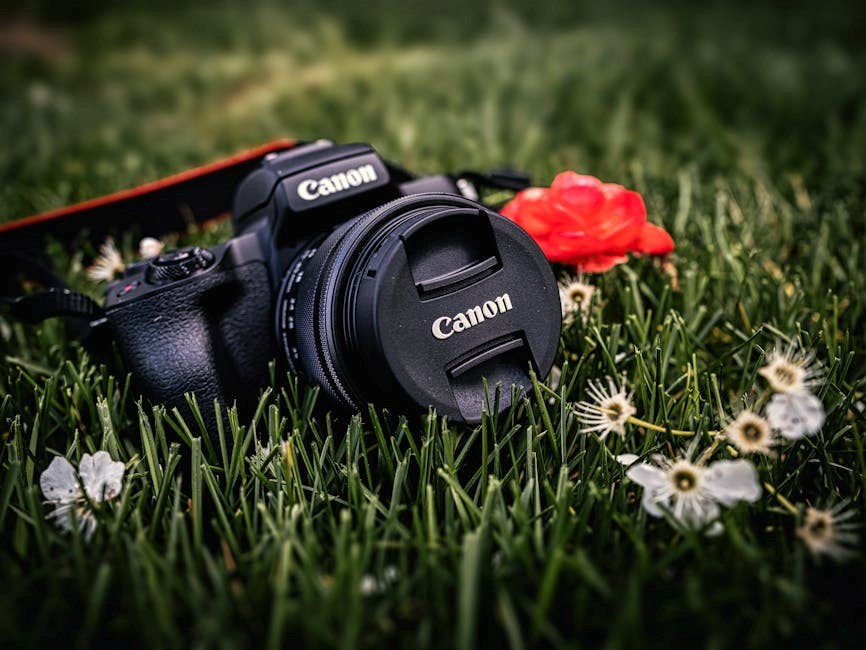
Service and Repair Procedures
This section outlines diagnostic steps‚ essential tools‚ and repair techniques for servicing Canon FL lenses. Detailed procedures guide disassembly‚ troubleshooting‚ and reassembly to restore optimal functionality.
4.1 Diagnostic Procedures for Common Issues
Diagnosing issues with Canon FL lenses begins with a thorough inspection of the lens elements for scratches‚ fungus‚ or misalignment. Check the aperture for smooth operation and ensure the blades open and close evenly. Test the focusing mechanism for stiffness or play‚ as these can indicate worn helicoids. Use a multimeter to verify electrical connections if the lens features electronic components. Examine the mount for damage or corrosion‚ which could affect camera compatibility. For aperture malfunctions‚ inspect the aperture lever and linkage for proper alignment. Similarly‚ focusing issues may stem from misaligned gears or debris in the mechanism. Refer to the manual’s troubleshooting charts for step-by-step guidance on identifying and addressing common problems. Always prioritize cleaning before disassembling‚ as dirt or grease may mimic more serious faults. By systematically evaluating each component‚ technicians can pinpoint the root cause of issues and apply the appropriate repair strategies. This methodical approach ensures efficient servicing and minimizes downtime for photographers. Proper diagnostic techniques are essential for maintaining the optical and mechanical integrity of Canon FL lenses‚ ensuring they continue to deliver exceptional image quality.
4.2 Tools and Equipment Required for Servicing
Servicing Canon FL lenses requires specialized tools to ensure precise and safe repairs. Essential items include a set of precision screwdrivers (Phillips and flathead) for disassembling the lens casing. A torque wrench is necessary for adjusting the helicoid and focus mechanism without causing damage. Plastic spudgers are used to gently pry apart components without marring surfaces. Optical cleaning supplies‚ such as microfiber cloths and Eclipse solution‚ are crucial for safely cleaning lens elements. A well-lit workspace and magnifying tools‚ like a jeweler’s loupe‚ aid in inspecting small parts. Additional tools include a lens spanner for removing stuck filters and a collimator for aligning optical elements. A multimeter may be needed for diagnosing electrical issues in later models. Always use a clean‚ static-free environment to prevent damage to sensitive components. Proper tools ensure accurate repairs and maintain the lens’s optical and mechanical integrity.
4.3 Step-by-Step Disassembly and Reassembly
Disassembling and reassembling a Canon FL lens requires precision and care to avoid damage. Begin by removing the front bezel and focusing ring‚ then carefully extract the optical elements using a lens spanner. Separate the lens into its mechanical and optical components‚ ensuring all screws are removed with a Phillips screwdriver. Use a torque wrench to release the helicoid assembly. During reassembly‚ align components using the provided diagrams in the manual. Reattach the optical elements securely and reassemble the focusing mechanism. Tighten all screws evenly and test the lens’s functionality. Refer to the manual’s exploded views for accurate alignment and part identification.

Maintenance and Cleaning Guidelines
Regular maintenance ensures optimal performance of Canon FL lenses. Clean optical surfaces with microfiber cloths and specialized solutions. Lubricate moving parts to maintain smooth operation. Inspect and clean the aperture mechanism regularly to prevent malfunctions. Use compressed air to remove dust from exterior components. Avoid harsh chemicals and abrasive materials to protect lens coatings. Properly store lenses in a dry‚ cool environment to prevent fungal growth and damage. Follow these guidelines to preserve image quality and extend the lifespan of your Canon FL lenses.
5.1 Cleaning the Lens Elements and Exterior
Carefully clean Canon FL lens elements using a microfiber cloth and a specialized lens cleaning solution. Gently wipe the glass surfaces in a circular motion to remove smudges and fingerprints. Avoid using harsh chemicals or abrasive materials‚ as they can damage lens coatings. For the exterior‚ use a soft brush to remove dust and debris‚ then wipe with a dry microfiber cloth to prevent streaks. Regular cleaning maintains optical clarity and prevents dirt buildup. Always store the lens in a dry‚ cool environment to avoid fungal growth. Proper cleaning practices ensure optimal image quality and protect your lens investment. Clean with precision to preserve optical performance.
5.2 Lubrication of Moving Parts
Proper lubrication of moving parts in Canon FL lenses is essential for smooth operation and to prevent wear. Use a high-quality‚ lightweight grease or silicone-based lubricant suitable for optical equipment. Apply a small amount to the aperture linkage‚ focusing helicoid‚ and other mechanical joints. Avoid over-lubrication‚ as it may attract dust and affect functionality. Gently move the parts after application to distribute the lubricant evenly. Regular lubrication maintains smooth focusing and aperture control‚ ensuring precise adjustments. Always clean the area before applying lubricant to remove dirt or old residue. Proper lubrication extends the lifespan of mechanical components and maintains optimal lens performance.
5.3 Calibration and Alignment Techniques
Calibration and alignment are critical for maintaining the optical and mechanical accuracy of Canon FL lenses. Start by ensuring the lens mount is securely attached and properly aligned with the camera body. Use precision tools to adjust the infinity focus‚ ensuring accurate distance settings. Align the aperture mechanism to synchronize with the camera’s metering system. Refer to the service manual for specific torque values and adjustment procedures. Regular calibration prevents issues like misfocus or incorrect aperture readings. Clean and inspect all moving parts before recalibrating to ensure smooth operation. Proper alignment ensures sharp images and accurate functionality‚ preserving the lens’s optical performance over time.
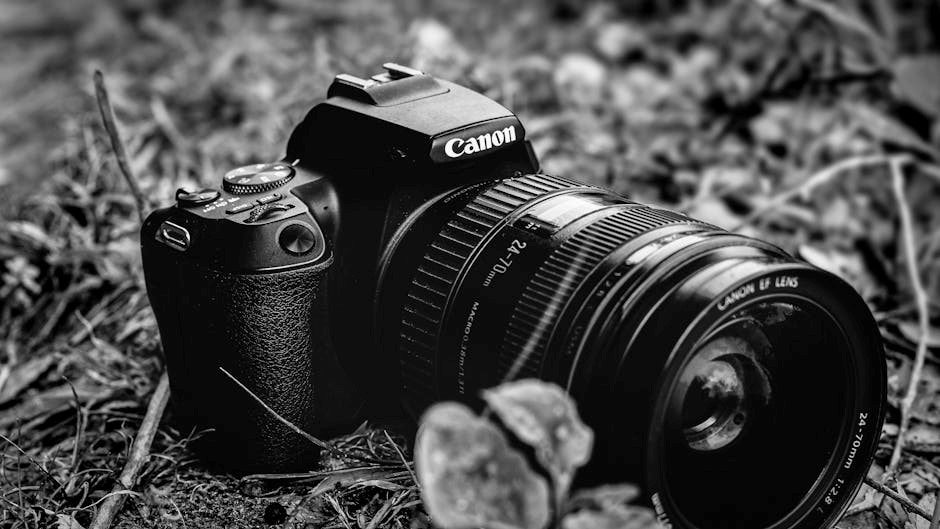
Troubleshooting Common Problems
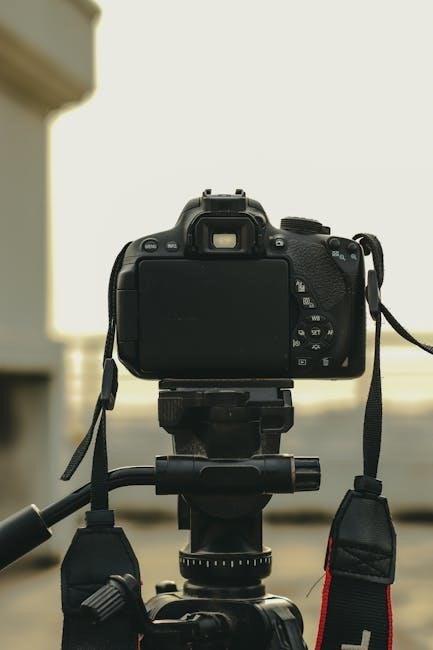
This section addresses frequent issues with Canon FL lenses‚ such as aperture malfunctions‚ focusing inaccuracies‚ and damaged components. It provides diagnostic steps and repair solutions to restore functionality and image quality‚ ensuring optimal performance and extending lens longevity. By identifying root causes and applying targeted fixes‚ users can resolve problems efficiently‚ maintaining the lens’s reliability and optical excellence. Proper troubleshooting techniques are essential for preserving the lens’s operational integrity and ensuring consistent results in various shooting conditions. Regular maintenance and prompt issue resolution are key to sustaining the lens’s performance over time.
6.1 Resolving Aperture Malfunctions
Aperture malfunctions in Canon FL lenses often stem from dirt‚ improper lubrication‚ or mechanical damage. Start by inspecting the diaphragm blades for obstructions or residue. Clean the blades gently with isopropyl alcohol and a soft brush. If the aperture fails to open or close fully‚ check the gears and springs for wear or misalignment. Lubricate moving parts with a lightweight grease recommended for optical instruments. For stuck or damaged blades‚ disassemble the lens and replace faulty components. Ensure the aperture control lever is functioning correctly and aligned with the lens mount. If issues persist‚ consult the service manual for advanced repair techniques or seek professional assistance. Proper calibration after repair is essential for accurate aperture control and optimal image quality.
6.2 Addressing Focusing Issues
Focusing issues in Canon FL lenses often arise from wear in the helicoid or gear misalignment. Inspect the helicoid for excessive play or damage. Clean the focusing mechanism with isopropyl alcohol and a soft cloth to remove grease or debris. Apply a lightweight‚ optical-grade lubricant to moving parts if necessary. Check the focus gear for misalignment or damage; adjust or replace it as needed. Ensure the focus ring operates smoothly and accurately. If the lens fails to focus to infinity‚ adjust the helicoid’s alignment or replace worn components. Test the focus at various distances to confirm proper function. Regular maintenance and precise alignment are key to resolving focusing issues effectively.
6.3 Repairing Damaged or Worn-out Parts
Repairing damaged or worn-out parts in Canon FL lenses requires precision and care. Start by disassembling the lens to access the faulty component. Use specialized tools like spanners or screwdrivers to avoid further damage. Clean old lubricant and debris with isopropyl alcohol and a soft cloth. Replace damaged helicoids‚ aperture blades‚ or glass elements with authentic Canon parts. Reassemble the lens carefully‚ ensuring proper alignment and smooth operation. Apply optical-grade lubricant to moving parts if needed. Test the lens thoroughly after repair to ensure optimal performance. Always refer to exploded diagrams for accurate reassembly. Regular maintenance and prompt repairs prevent irreversible damage and extend the lens’s lifespan.

Illustrated Parts List
The Illustrated Parts List provides detailed diagrams and component identification for Canon FL lenses‚ ensuring accurate repair and replacement of worn or damaged elements.
7.1 Detailed Component Identification
This section provides a comprehensive breakdown of all components within the Canon FL lens‚ ensuring precise identification for repair and maintenance. Each part‚ from optical elements to mechanical components‚ is meticulously labeled and described. The manual includes high-resolution diagrams that highlight the lens mount‚ aperture control‚ and focusing mechanism‚ allowing technicians to locate and service specific areas efficiently. Detailed part numbers and descriptions are provided to facilitate accurate ordering of replacement components. This section is essential for understanding the intricate design of FL lenses and ensures that repairs are conducted with utmost precision‚ preserving the lens’s optical and mechanical integrity. Proper identification is the first step in effective servicing‚ and this guide offers unparalleled clarity and detail.
7.2 Exploded Diagrams of the Lens Assembly
This section features detailed exploded diagrams that visually disassemble the Canon FL lens into its constituent parts. Each diagram meticulously illustrates the spatial relationships and connections between components‚ such as optical elements‚ aperture control mechanisms‚ and helicoid assemblies. These visuals are invaluable for technicians‚ providing a clear understanding of how the lens is constructed and how parts interact. The diagrams highlight mounting points‚ gear systems‚ and other critical interfaces‚ aiding in precise disassembly and reassembly. By referencing these exploded views‚ service professionals can identify and access internal components with confidence‚ ensuring accurate and efficient repairs. This visual guide is essential for mastering the internal structure of the FL lens.
7.3 Sources for Replacement Parts
This section identifies reliable sources for obtaining replacement parts for the Canon FL lens‚ ensuring authenticity and compatibility. Official Canon service centers and authorized distributors are primary sources‚ offering genuine components. Additionally‚ reputable third-party suppliers and specialized camera repair shops provide a wide range of parts‚ from optical elements to mechanical components. Online marketplaces and forums dedicated to vintage photography equipment are also valuable resources for rare or discontinued parts. Always verify the authenticity and compatibility of parts before purchase to maintain lens performance and longevity. These sources are essential for technicians and photographers seeking to restore or maintain their Canon FL lenses effectively.

Advanced Repair Techniques
This section covers specialized procedures for complex repairs‚ such as replacing the lens mount‚ adjusting infinity focus‚ and repairing the diaphragm mechanism‚ ensuring precise optical alignment and functionality.
8.1 Replacing the Lens Mount
Replacing the lens mount requires careful disassembly to avoid damage. Start by removing the front decorator plate‚ then take out the four screws securing the lens-mounting ring. Gently lift off the old mount and replace it with a compatible Canon FL mount. Ensure the new mount is properly aligned and securely fastened with screws tightened evenly. After installation‚ verify the aperture lever’s connection to the camera body for correct functionality. Clean the area before installation to prevent debris interference. Use appropriate tools to avoid stripping screws and refer to the manual for specific instructions and diagrams. Proper alignment ensures the lens fits correctly on the camera‚ maintaining optical performance and functionality.
8.2 Adjusting the Infinity Focus
Adjusting the infinity focus ensures precise alignment between the lens and camera‚ guaranteeing sharp images at infinity. Begin by focusing at infinity using a high-contrast object. Remove the aperture ring and locate the focus adjustment screw on the lens helicoid. Using a precision screwdriver‚ turn the screw clockwise or counterclockwise until the focus aligns accurately. Test the adjustment by photographing a distant object and verifying sharpness. Repeat adjustments as needed for optimal results. This process ensures the lens delivers crisp images at maximum focus distance‚ maintaining the optical precision of the Canon FL lens. Proper calibration is essential for professional-grade photography outcomes.
8.3 Repairing the Diaphragm Mechanism
Repairing the diaphragm mechanism requires precision to restore accurate aperture control. Begin by disassembling the lens to access the diaphragm assembly. Inspect the blades for damage or wear. Clean or replace damaged blades‚ ensuring proper alignment. Lubricate moving parts with a lightweight grease to maintain smooth operation. Reassemble the mechanism‚ ensuring the aperture ring functions correctly. Test the diaphragm by adjusting the aperture through its range‚ verifying consistent and precise control. Proper repair ensures the lens delivers consistent exposure and optical performance. This procedure is critical for maintaining the lens’s functionality and image quality‚ especially for professional photography applications.
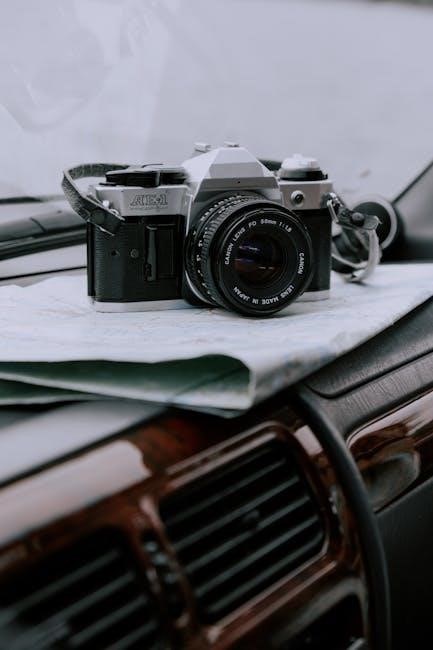
Compatibility with Canon Camera Systems
The Canon FL lenses are compatible with various camera systems‚ including older film bodies and modern digital cameras using adapters. This ensures longevity and versatility for photographers‚ maintaining optimal performance across different systems and generations of equipment‚ while preserving the lens’s optical quality and functionality. Adapters enable seamless integration‚ allowing FL lenses to remain relevant and effective in contemporary photography setups‚ ensuring their timeless appeal and usability for both nostalgic and practical applications.
9.1 Using FL Lenses on Modern Canon Bodies
Using Canon FL lenses on modern EOS bodies requires adapters due to differences in mount systems. The FL mount‚ introduced in the late 1950s‚ differs from the EF mount used in contemporary EOS cameras. Adapters enable physical compatibility‚ allowing older FL lenses to be mounted on newer EF mount cameras. However‚ limitations may arise‚ such as potential vignetting‚ as FL lenses were originally designed for film cameras and may not fully cover digital sensors. Additionally‚ metering and aperture control may need adjustment‚ possibly requiring manual mode or stop-down metering. While autofocus isn’t supported‚ manual focusing is feasible‚ though it may present challenges with moving subjects or in low-light conditions. Despite these constraints‚ using FL lenses on modern bodies offers unique creative opportunities‚ leveraging the distinct optical qualities of these vintage lenses. Experimentation with stationary subjects in well-lit environments can help photographers adapt to manual focusing and lens behavior differences‚ opening up new artistic possibilities despite operational limitations.
9.2 Adapters and Conversion Options
Adapters enable Canon FL lenses to be used on modern Canon EOS bodies‚ bridging compatibility gaps between legacy and current systems. Common adapters include FD-to-EF mount converters‚ allowing FL lenses to be mounted on EF mount cameras. While these adapters provide physical compatibility‚ they often lack electronic communication‚ requiring manual aperture control and focus. Third-party adapters may offer additional features‚ such as aperture control via a built-in ring. However‚ functionality can vary‚ and some adapters may not support all lens features. Always ensure compatibility with your specific camera model and lens combination. Purchasing from reputable suppliers is recommended for optimal performance and safety.
9.4 Ensuring Optimal Performance Across Systems
To ensure optimal performance of Canon FL lenses across different systems‚ proper alignment and calibration are essential. When using FL lenses on modern Canon bodies via adapters‚ verify that the lens is securely mounted and aligned to prevent vignetting or focus errors. Regularly clean and maintain the lens to avoid dust or debris affecting image quality. Calibration may be required to achieve precise focus accuracy‚ especially when adapting older lenses to newer systems. Always follow the manufacturer’s guidelines for compatibility and performance optimization. Testing the lens on multiple bodies ensures consistent results. Proper servicing and alignment are key to maximizing the lens’s potential across systems.
The Canon FL Lens Service Manual is a comprehensive guide for servicing and maintaining FL lenses. Proper servicing ensures longevity and optimal performance. For further assistance‚ refer to official Canon resources‚ repair guides‚ and authorized service centers. Regular maintenance and correct repair procedures are vital to preserving the quality of your FL lenses. Utilize this manual alongside Canon’s official documentation for the best results in lens care and repair. Always rely on genuine parts and tools for servicing to maintain the integrity of your equipment. Happy servicing and photography!
10.1 Importance of Proper Servicing
Proper servicing of Canon FL lenses is essential to maintain their optical performance‚ mechanical precision‚ and longevity. Neglecting regular maintenance can lead to degraded image quality‚ focusing issues‚ and irreversible damage. Dust‚ moisture‚ and wear on moving parts can compromise the lens’s functionality over time. Servicing ensures the lens retains its value and continues to deliver sharp‚ clear images. By following the manual’s guidelines‚ photographers and technicians can prevent malfunctions‚ address wear‚ and restore the lens to its original condition. Proper care not only preserves the lens’s optical integrity but also ensures reliable operation for years of professional use.
10.2 Recommended Tools and Resources
Proper tools and resources are vital for effective servicing of Canon FL lenses. Essential tools include precision screwdrivers‚ lens cleaning brushes‚ microfiber cloths‚ and aperture adjustment tools. A well-lit workspace and magnification aids like loupe or macro lenses are also recommended. Genuine Canon repair manuals and exploded diagrams provide detailed guidance. Online forums and specialized photography communities offer valuable insights and troubleshooting tips. Additionally‚ sourcing original replacement parts from authorized dealers ensures compatibility and performance. Investing in a complete toolset and leveraging reliable resources helps technicians and photographers achieve professional-level servicing and maintain the lens’s optical and mechanical integrity effectively.
